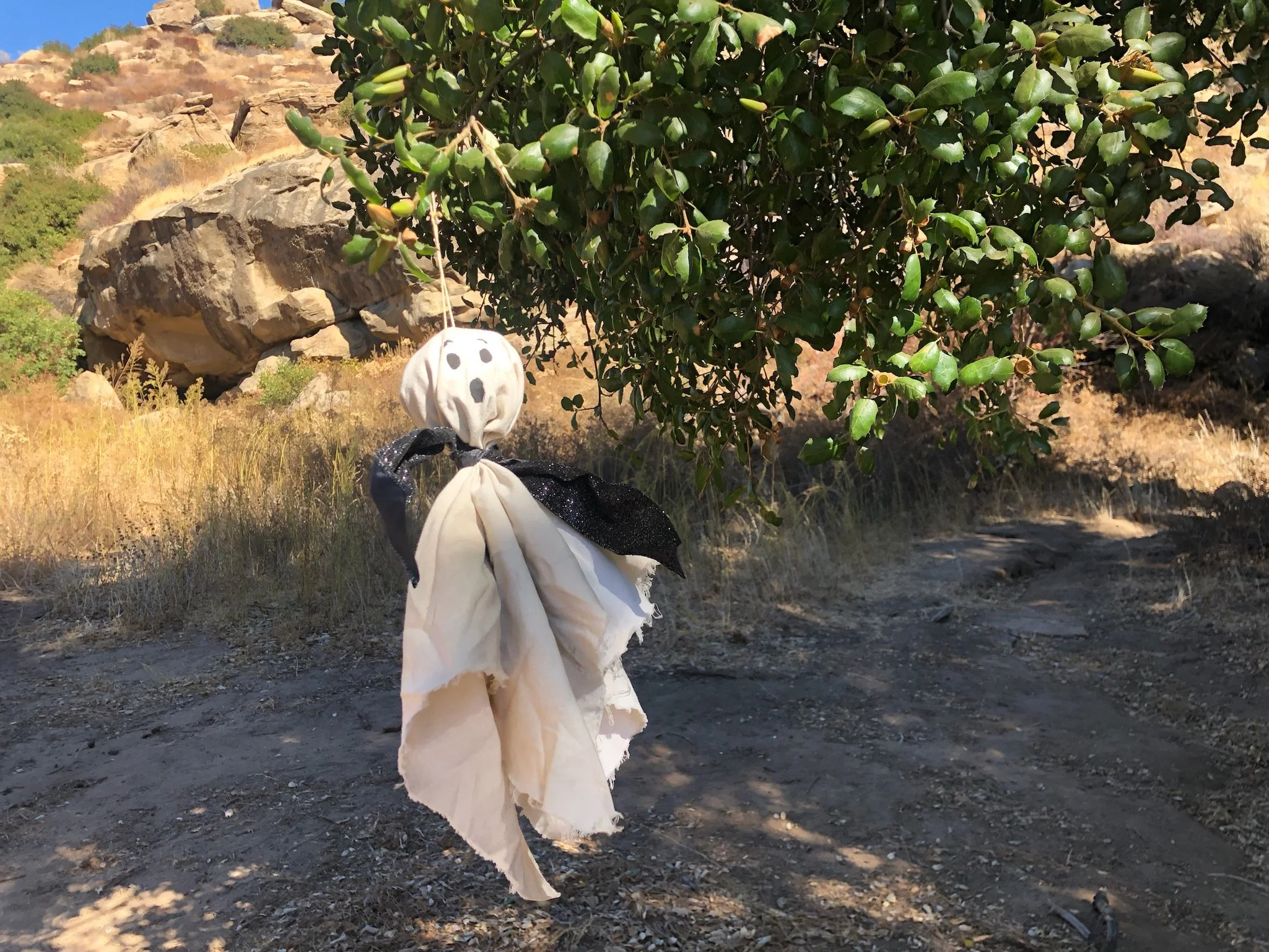Spooky Season + Storytelling
A ‘Ghostie’ the children made filled with good smelling wild plants
Oral storytelling is a big part of our program at Wild Kin. Storytelling is one of humanity’s oldest technologies for transmitting culture, and we believe that oral stories are some of the most beneficial. Unlike a picture book, oral stories help children develop their imagination by calling upon them to imagine the scenes in their mind’s eye. Stories in general help children make sense of the world, work through emotional stress, consider their own behavior, and are generally a fun and engaging way to learn new things! We write many of our own stories as well as sourcing stories from all over the world, and across cultures and centuries, interpreting and adapting them for our classroom.
With the Halloween season approaching, we recently came across the book, Favorite Scary Stories of American Children by Richard Young and Judy Dockrey Young. This is an anthology of scary stories sorted by age (suggested for ages 5-10). Some of the stories in this anthology are better than others, but the real gem of this book is in the afterword where the authors share their advice and philosophy for parents and teachers. Scary stories can be a powerful tool for children to ‘practice’ these emotions in a supportive environment where the fear is always overcome by the end of the story. Here are some excerpts from the essay:
On the benefits of ‘scary’ stories:
“Children don’t fear the same things grown-ups do. A story for us might threaten its central character with failure, rejection, impotency, or loss of wealth or status. The heroes of children’s fantasy tales are threatened with simpler things: being eaten by a troll, for example, or being cooked in an oven by a witch. Children understand these simple dangers and experience fear for the safety of the heroes and then both relief and mastery of former fear when the heroes triumph in the end. When the witch is cooked in her own oven or the troll overeats and explodes, the story teaches that the evil-doer is undone by his, her, or its own evil ways: evil gets punished. Because of the vicarious fear and triumph children experience in frightening fantasies (a powerful thrill too many of us bigger people have forgotten in the years since childhood), scary stories are often their favorites.”
What’s different about ‘scary’ fairy tales?
“…Of course children can be scarred by violence….The violence in fairy tales is different:
... the storyteller or reader is present to give moral support to the child audience
... the fear is centered on the storyline and is mastered as the story reaches its conclusion with hero and audience intact
... the “distance” between the real world and the events of the story is great enough that the child returns to his or her own real world without the fear felt while “inside” the story.”
Advice from the authors for telling ‘scary’ stories to children:
“The conscientious parent, teacher, or librarian will always need to know a great deal about the story-listening audience, and must make some choices about the age-appropriateness of scary stories for each audience. Even so, the adult reviewer should not arbitrarily reject a story based on its potentially fearful content…In general, children are a better judge of what frightens them than adults are. The story teller or reader should always watch the reactions of the audience to the story. A fearful facial expression is normal as the child works through the anxiety and masters it. If a story becomes too scary for a small child, he will seek a lap to sit in, or cover his ears, or ask you to stop.”
“In the rare event that a story is too scary for a child, the storyteller or reader should stop briefly and help the child master the fear. Explain, for example, that trolls don't live in your city (but not that trolls don't exist—that insults the child's fear). Or, you may paraphrase the rest of the story and move quickly to the happy ending. Don't simply stop the story: the ending is necessary to master the fear and instill hope. Usually, when a child is frightened and does not want to hear the end of a story, he will ask to hear that story again months or years later, when he is ready to face and master his fear of it.”
Thanks for reading!
Wild Kin Forest School

